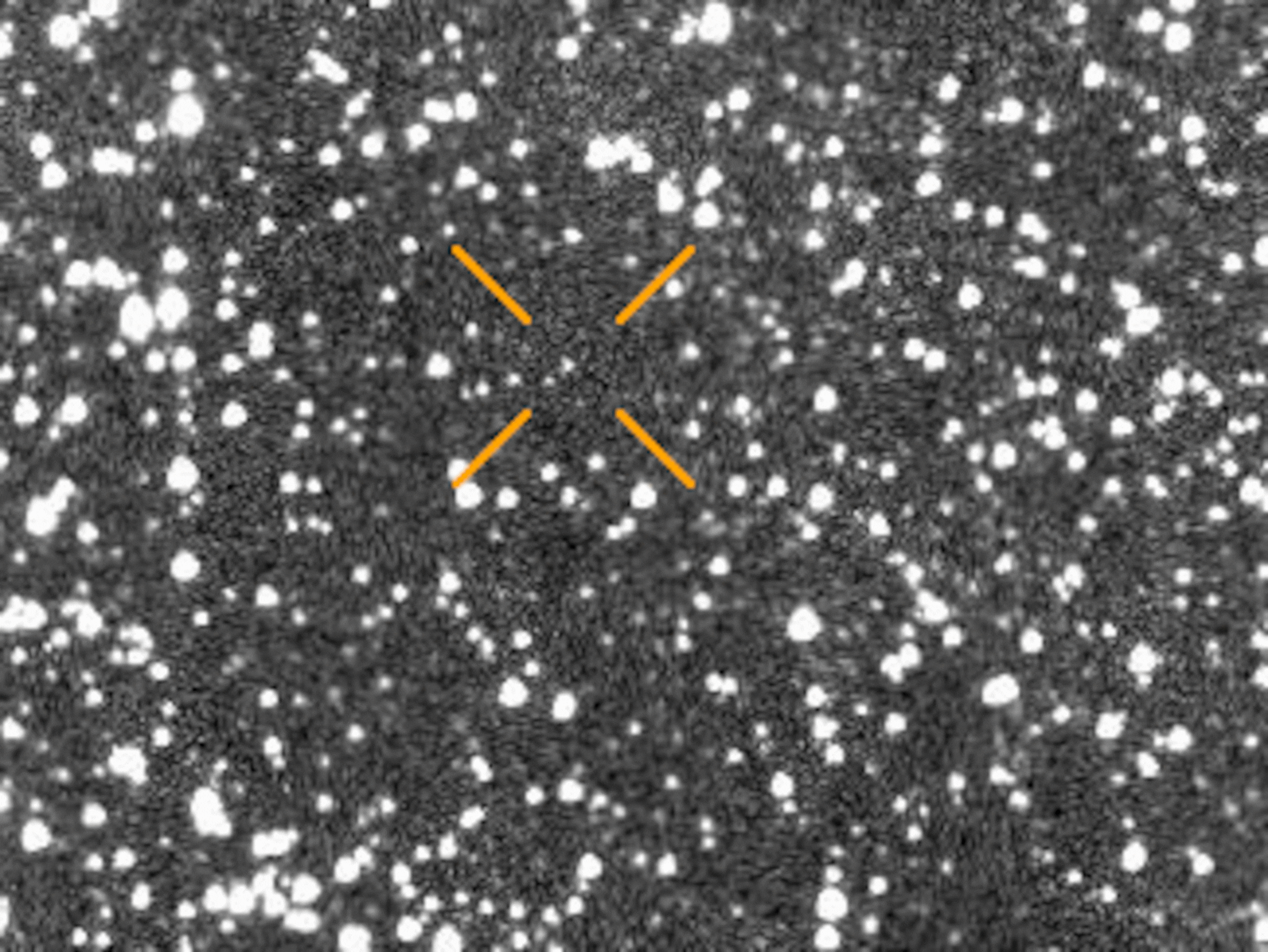
View of Exploding Star Appears, Right on Cue
Astronomers predicted for the first time when a supernova would appear in the sky, using physics that played out as scripted by Einstein.
Like cosmic clairvoyants, scientists predicted precisely where and when to see a distant star blow itself to bits—and caught the explosion in action on December 11.
What’s more, this isn’t the first time astronomers have watched the same star blow itself up. It’s at least the fifth. A massive galaxy parked in front of the star, which is about nine billion light-years away, is warping the explosion’s light and projecting magnified images of the supernova onto the sky.
The team spotted four images of the explosion in late 2014, arranged in a configuration known as an Einstein cross, and named the supernova Refsdal.
(See the Einstein cross in "Galaxy in Front of Supernova Creates Cosmic Mirage.")
By studying the positions of the four images and the slight variations in the time their light took to travel to Earth, the team could predict when the cosmic spectacle would replay, and have been keeping an eye on the sky and looking for the rerun.
This is the first time astronomers have seen anything like it.
“This is incredibly fun. It's amazing to work on something that you know will one day be in a textbook,” says Ryan Foley of the University of Illinois at Urbana-Champaign, who was part of the team that observed the supernova.
Gravitational Lensing
In his theory of general relativity, Einstein described how massive objects could tug on light, and even pull at the fabric of space-time. Put simply, strong gravitational fields from massive objects can act as lenses—warping, magnifying and redirecting light as it travels through the cosmos.
"It's just this incredible verification of general relativity," Foley told National Geographic in March, when he and his colleagues reported the lensed supernova in Science.
Depending on the lensing geometry and position of the viewer—in this case, the Hubble Space Telescope—multiple images of the same background object can be produced. Some of those images might even arrive years apart.
Though a handful of bright, active galaxies have been caught in a cross shape before, this was the first supernova found in perfect quadruplicate.
"I had not even seriously entertained the possibility of finding multiple images of the same supernova," says University of California, Berkeley postdoc Patrick Kelly, who spotted the supernova in images from Hubble. "They are definitely very unusual.”
Scientists predicted this explosion would later replay in a completely different part of the galaxy cluster. Now, studying the delay between showtimes will help them gather information about the anatomy of the cluster.
“We are effectively able to weigh the galaxy cluster and figure out where the mass is,” Foley says.
Superweird Supernova
The supernova itself is something of an enigma. Kelly and the team named it after Sjur Refsdal, the Norwegian astrophysicist who first predicted that lensed supernovae could be used to probe cosmic expansion, back in 1964.
Scientists caught the explosion early and have watched as it got brighter. Normally, supernovas brighten and dim in a predictable manner, but this one wasn't obeying the rules. What's more, the spectrum of light from the explosion didn't match any of the known types of supernovae. Scientists' best guess was that it's a peculiar type of core-collapse supernova, similar to one that went off in 1987 in the Large Magellanic Cloud.
It's also possible that nine billion years ago, stars were following a slightly different set of rules. The younger universe contained fewer metals, scientists say, and the stars grew bigger and died faster. So it's not inconceivable that supernovae behaved differently, too.
"I would not be surprised if this was a little bit different than local examples," Foley says. "One of the big open areas of research is determining exactly what changes with cosmic time or distance."





